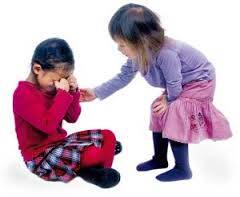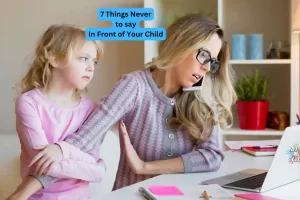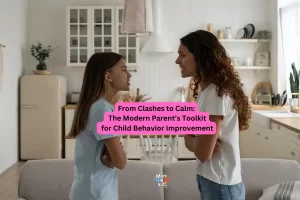Compassion is the desire to assuage feelings of suffering in others. A compassionate person considers the sufferings of others as his own. Teaching compassion can make our children aware of the world around them and it teaches tolerance towards different cultures and personalities. This enables children to be more sensitive and caring, that in turn leads to better relationships with others as they grow into adulthood.
by Dr. Caron Goode
Compassion is the desire to assuage feelings of suffering in others. A compassionate person considers the sufferings of others as his own. But compassion is not pity and it is also different from altruism, which is simply an action of helping others. Compassion is a combination of feeling for someone else, experiencing the suffering and a positive move to reduce the suffering of others.
Today there is a need to make specific efforts to teach compassion to children for several reasons:
-
Competitive environments force us to be cut-throat – High levels of competition in society are not limited to only the workplace but have percolated down to academics and childrens sports. Even young toddlers are not spared by this bogeyman of vying for the best position in class or the maximum attention of the teacher.
-
Violence in the media and environment – Our children today are more exposed to violence due to television programs and video games. This in turn tends to increase violence in children themselves. A review done by NCTV in 1990 found that 75% of the studies that were done on the effect of video games on normal children reported that video games had harmful effects. Psychologists Craig A. Anderson, Ph. D., and Karen E. Dill, Ph. D. have said “…the study reveals that even a brief exposure to violent video games can temporarily increase aggressive behavior in all types of participants” [1].
Teaching compassion can make our children aware of the world around them and it teaches tolerance towards different cultures and personalities. This enables children to be more sensitive and caring, that in turn leads to better relationships with others as they grow into adulthood.
Teaching Compassion to Children
All education begins in the home and so does teaching the virtue of being compassionate. Here are a few things that you can do to encourage compassionate actions in your children.
-
Start at the very beginning – Ensure that you express and show a lot of love and affection towards your child when he is a baby. They can feel the vibes and become soothed or agitated by their bonding with their parent. Alice Sterling Honig, a professor of child development in Syracuse University says “Without that attachment, babies will later have difficulty showing love and affection. The early months of infancy are crucial. When you have a relationship that’s loving and secure with an adult, then you are probably going to be able to give to others in life the way you were given to.” [2]
-
Communicate about the benefits of compassion – talking to your kids about how compassion can help them be better people will also help. Your children need to understand how being compassionate can help them contribute to the society that they live in and make their life more meaningful and worthy. It also communicates that you believe and practice compassion as a family. The child then tries to model these virtues since he believes that he is part of the family and wants to be like other family members.
-
Be a role model – The first thing that you need to know if you want to teach compassion is that a child’s strongest example is when you exhibit compassion yourself. Compassionate acts truly do speak louder than words.
-
Volunteer service as a family – The act of giving up certain things to others and helping others can provide a great sense of achievement and fulfillment to an individual. You could plan trips to an orphanage and have your children give away some of their toys and clothes to other children. A family tradition of community service, setting aside of a certain amount every year for each member of the family to give away as charity, and praying together are among some of the family routines that go a long way in nurturing compassion so that it becomes an essential feature in the mindset of children.
-
Use the aid of stories, folklore and mythology – Folklore, and mythology are mostly associated with positive values and the theme almost always provides useful lessons in moral and ethical values. Children who are constantly exposed to reading and discussions on such stories are prone to be more compassionate than those who listen only to the violent fare shelled out through the electronic medium.
-
Talk about real life famous heroes – Stories of famous compassionate people help in developing high moral values in children and adults alike. Choose people like the Dalai Lama, Mahatma Gandhi, and Martin Luther King who are renowned for their compassion and moral attitudes. Reading sessions in the family of their life histories and events can also be instrumental in teaching the importance of being kind, caring, and empathic.
Teaching compassion to our children is more relevant now than it was ever before. It is the atmosphere in homes that necessarily reflects on the society as a whole. When there are tools available for teaching compassion to our children is it not better that we try to create a new environment that is non-violent and compassionate?
References:
References:
[2] http://www.bellaonline.com/articles/art9676.asp
Biography
Dr. Caron B. Goode is the founder of the Academy for Coaching Parents International, a training and certification program for parent coaches. In addition to duties with the academy, Dr. Goode is the founding editor of the website InspiredParenting.net, and the author of eleven books, the most recent of which is Help Kids Cope with Stress & Trauma, which includes several chapters on he use of storytelling strategies. For more information on The Academy for Coaching Parents International or to sign up for academy announcements, visit www.acpi.biz .
Dr. Caron B. Goode is the founder of the Academy for Coaching Parents International, a training and certification program for parent coaches. In addition to duties with the academy, Dr. Goode is the founding editor of the website InspiredParenting.net, and the author of eleven books, the most recent of which is Help Kids Cope with Stress & Trauma, which includes several chapters on he use of storytelling strategies. For more information on The Academy for Coaching Parents International or to sign up for academy announcements, visit www.acpi.biz .
No part of this article may be copied or reproduced in any form without the express permission of More4Kids Inc © and all rights reserved.












Thank you for the information… some words are too “big” for people to understand, but great topic!!!
Thank You Again…
Great job.
Important AND the most powerful educator by far is the cultural context. All words and actions confirm or confuse what is being learned by osmosis.